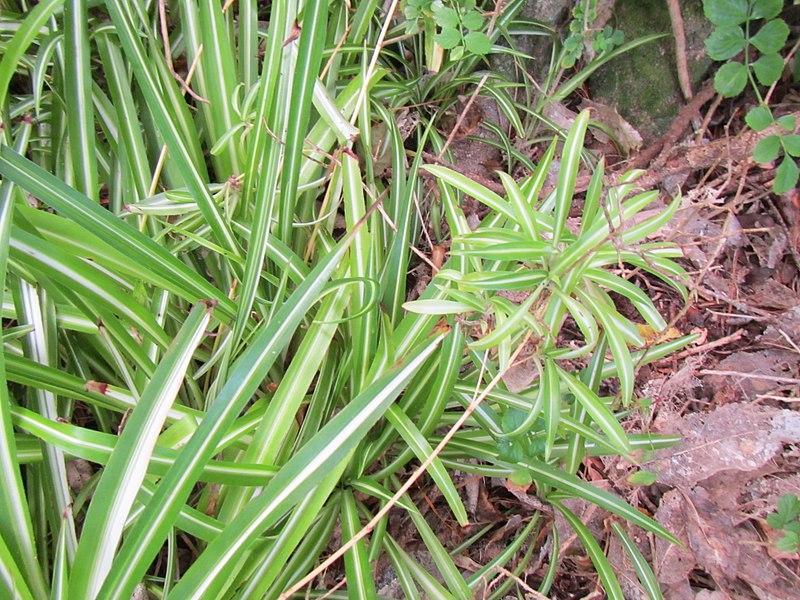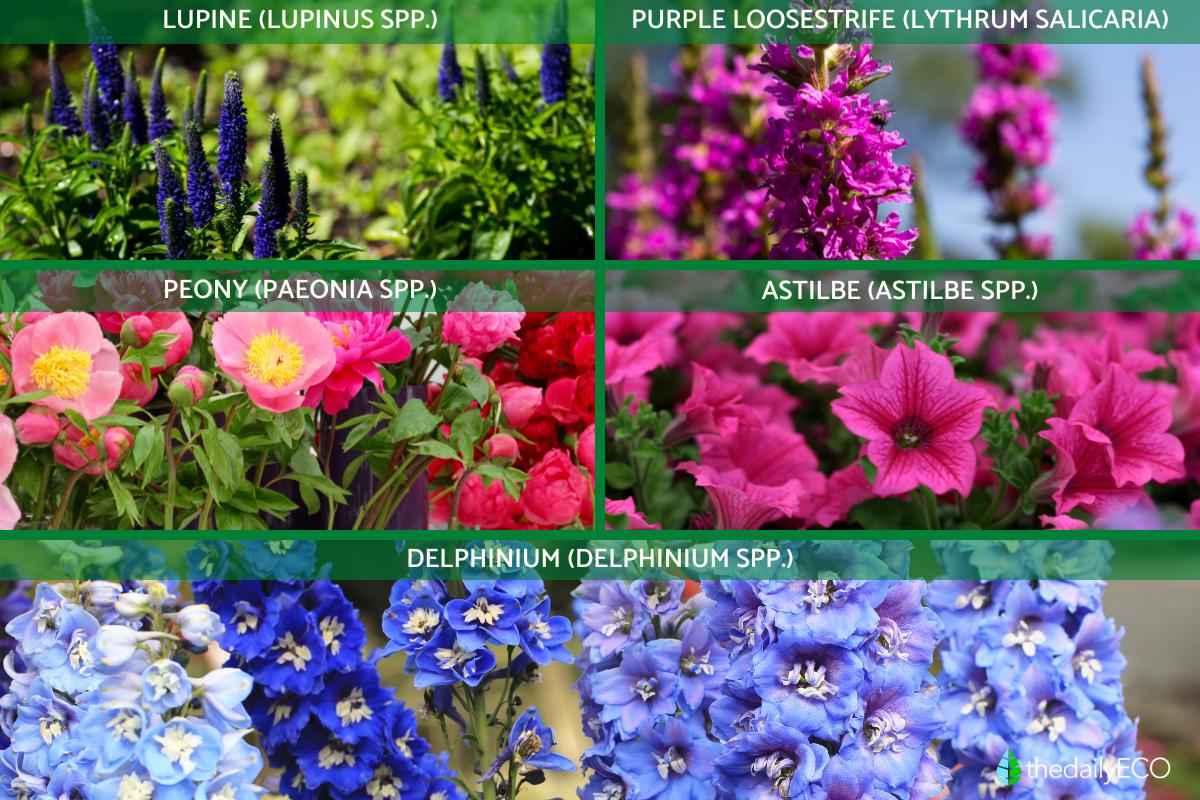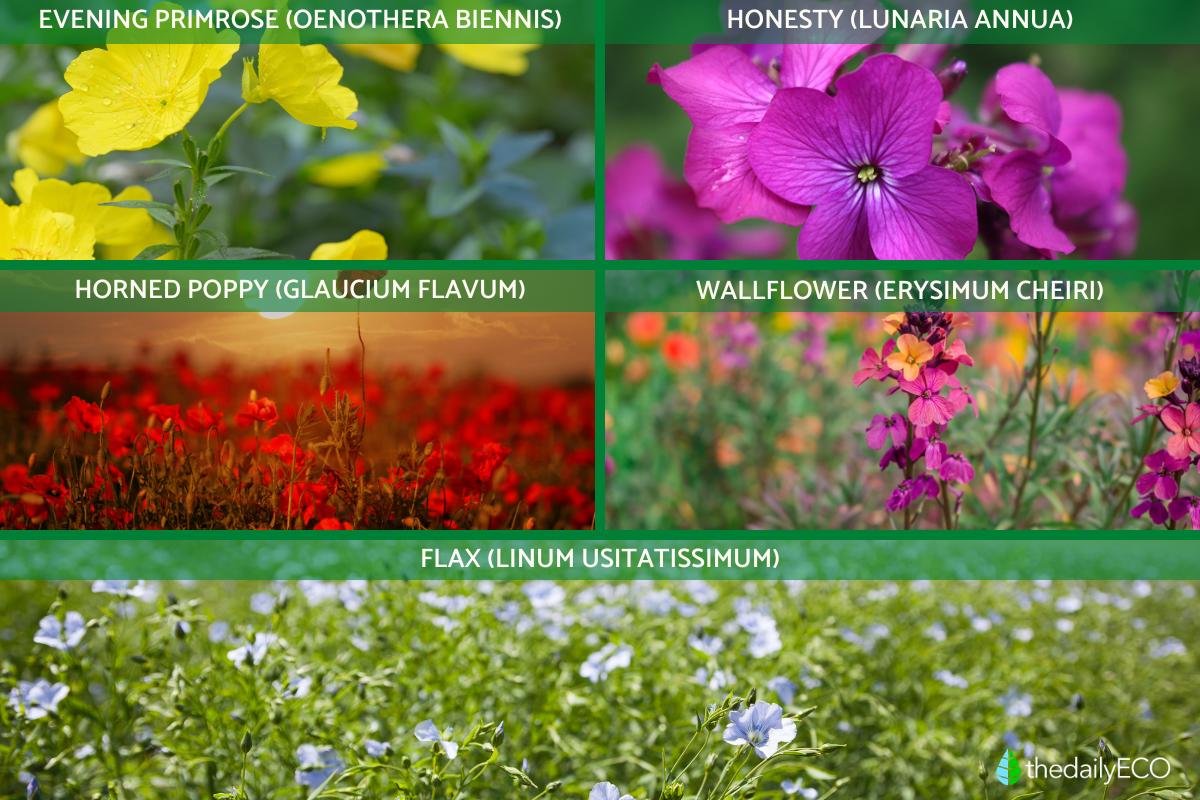What Are Herbaceous Plants?

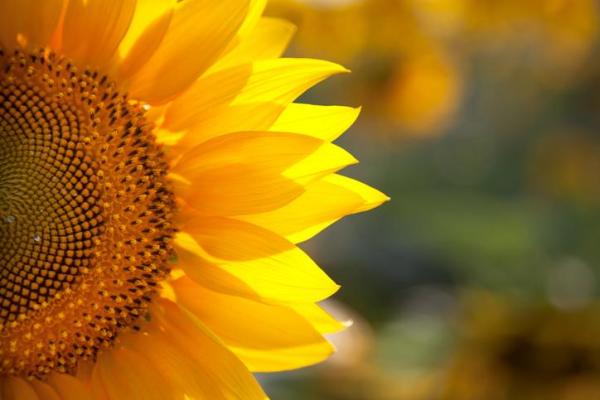
Herbaceous plants represent a vast and diverse group in the plant kingdom, distinguished primarily by their non-woody stems and unique growth patterns. Unlike trees and shrubs, which develop woody tissue, these plants maintain soft, pliable stems throughout their life cycle. From the seasonal blooms in our gardens to many of the vegetables on our plates, herbaceous plants play essential roles in both natural ecosystems and human cultivation.
This article from thedailyECO explores what herbaceous plants are, examines their main classifications based on life cycles, and provides relevant examples of each type.
What are herbaceous plants and their characteristics
Herbaceous plants are defined by their non-woody stems, which fundamentally distinguishes them from trees and shrubs. They typically develop green stems and leaves, and many species produce terminal flowers at their growing tips.
These plants serve diverse purposes in both cultivated and natural settings. In gardening, they function as ornamental elements and ground cover plants, adapting to spaces from small garden beds to larger landscapes. While many herbaceous plants are specifically cultivated, numerous species also grow wild in natural environments. Some species offer value as food sources, while others contain compounds with medicinal properties that can be extracted as essential oils or prepared as infusions.
Key characteristics of herbaceous plants:
- Life cycle patterns: can be annual (completing their lifecycle in one year), biennial (two-year cycle), or perennial (living for multiple years), affecting their growth and maintenance requirements.
- Root systems: develop either fibrous root systems spreading horizontally near the surface, or tap roots growing vertically deep into the soil, determining their resource acquisition and stability.
- Seasonal behavior: many species undergo seasonal die-back, where above-ground parts wither while underground structures remain viable, allowing regeneration in favorable conditions.
- Size range: heights typically vary from a few centimeters to several meters (a few inches to 6-7 feet), though most common garden varieties remain under two meters (6.5 feet).
- Growth rate: generally exhibit faster growth rates compared to woody plants, enabling rapid establishment and recovery from damage.
Curious about how woody plants differ from herbaceous ones? Explore our detailed guide on the unique characteristics of woody plants.

Types of herbaceous plants
Herbaceous plants are primarily classified according to their life cycles into three main categories:
- Annual plants: complete their entire life cycle (germination, growth, flowering, seed production, and death) within a single growing season.
- Perennial plants: Live for multiple years, with the ability to flower and produce seeds repeatedly. While their above-ground parts may die back seasonally, their root systems remain alive.
- Biennial plants: require two growing seasons to complete their life cycle, typically producing leaves in the first year and flowering in the second before dying.
While these categories provide a fundamental framework for understanding herbaceous plants, it's important to note that some species can adapt their life cycles in response to environmental conditions.
In the following sections, we will explore each category in detail, examining their distinctive characteristics and providing specific examples that illustrate their growth patterns and uses in both natural and cultivated settings.
Annual herbaceous plants
Annual herbaceous plants complete their entire life cycle within a single year. During this period, they progress through all developmental stages: germination, vegetative growth, flowering, seed production, and senescence. While most annual plants thrive during summer months, some species are adapted to winter growing seasons, demonstrating the diversity within this classification.
The life cycle timing of annual plants typically aligns with favorable environmental conditions:
- Summer annuals: germinate in spring, flower during summer, and set seed before dying in fall.
- Winter annuals: germinate in fall, survive through winter, flower in early spring, and complete their cycle before summer.
Examples of annual herbaceous plants:
- Sunflower (Helianthus annuus): a prominent summer annual that can reach significant heights, known for its distinctive flower heads.
- Pot marigold (Calendula officinalis): produces bright orange or yellow flowers and is valued for both ornamental and medicinal purposes.
- Common petunia (Petunia × hybrida): popular ornamental annual known for its prolific blooming.
- Common poppy (Papaver rhoeas): characterized by its bright red flowers and rapid growth cycle.
- Corn (Zea mays): a crucial agricultural annual that provides one of the world's most important food crops.
Did you know that some of the most colorful garden displays come from plants that complete their entire life cycle in just one year? Learn more about these quick-blooming beauties in our related article.
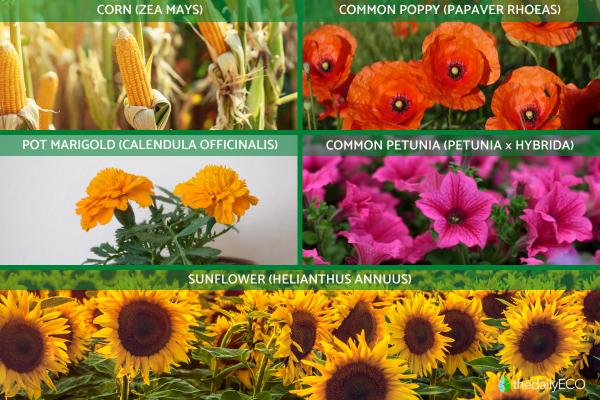
Perennial herbaceous plants
Perennial herbaceous plants are remarkable survivors in the plant kingdom. When winter arrives, their visible parts may wither and die, but life continues beneath the soil through their complex underground structures.
These plants have evolved sophisticated root systems that include bulbs, rhizomes, and other specialized organs that store energy and nutrients. This clever adaptation not only allows them to spring back to life when warm weather returns but also helps them thrive year after year, becoming increasingly resilient to environmental challenges.
Examples of perennial herbaceous plants:
- Lupine (Lupinus spp.): produces tall spikes of colorful flowers and enhances soil through nitrogen fixation.
- Purple loosestrife (Lythrum salicaria): characterized by its vibrant purple flower spikes and adaptability.
- Peony (Paeonia spp.): known for its large, fragrant blooms and long-lived root systems.
- Astilbe (Astilbe spp.): features feathery plumes of flowers and thrives in shaded conditions.
- Delphinium (Delphinium spp.): develops tall spikes of usually blue flowers and deep root systems.
- Sea lavender (Limonium spp.): displays clusters of small flowers and adapts well to coastal conditions.
- Coral bells (Heuchera spp.): valued for its colorful foliage and compact growth habit.
This diverse group of plants demonstrates the remarkable adaptability of perennial herbaceous species, offering both ornamental value and ecological resilience in various growing conditions. Want to learn more about herbaceous plants that survive multiple seasons? Explore our comprehensive guide to perennials.
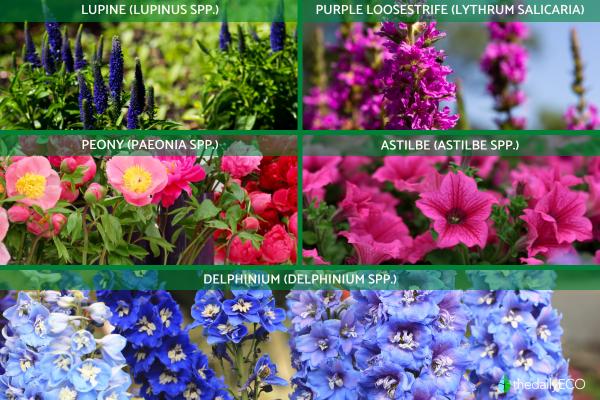
Biennial herbaceous plants
Biennial plants complete their life cycle over two growing seasons, following a distinct two-phase development pattern.
During their first year, they focus on vegetative growth, developing roots, stems, and leaves while storing energy.
In their second year, they channel their stored energy into flowering, seed production, and ultimately complete their life cycle.
Examples of biennial herbaceous plants:
- Evening primrose (Oenothera biennis): produces tall flower spikes with yellow blooms in its second year.
- Honesty (Lunaria annua): despite its species name "annua," this plant is actually biennial, known for its decorative silvery seed pods.
- Horned poppy/Sea poppy (Glaucium flavum): coastal plant with distinctive yellow flowers and long seed pods.
- Wallflower (Erysimum cheiri): offers fragrant blooms in various colors during its second spring
- Flax (Linum usitatissimum): while typically grown as an annual crop, some varieties can grow as biennials
It is important to note that plants can demonstrate flexibility in their life cycles based on environmental conditions. What we typically classify as a biennial or annual plant might adapt its growing pattern depending on climate, stress factors, and geographic location. For example, a biennial plant might complete its entire life cycle in one year if growing in a warmer climate (behaving like an annual), or survive for several years in ideal conditions (acting like a perennial).
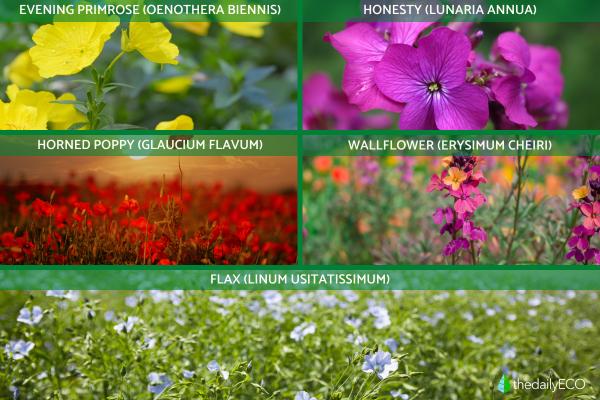
If you want to read similar articles to What Are Herbaceous Plants?, we recommend you visit our Biology category.
- Encyclopedia of Life. (2024). Plant Life Cycles. https://eol.org/docs/discover/plants
- Missouri Botanical Garden. (2024). Plant Finder. https://www.missouribotanicalgarden.org/plantfinder/plantfindersearch.aspx
- USDA Natural Resources Conservation Service. (2024). Plants Database. https://plants.usda.gov/home
- Global Biodiversity Information Facility. (2024). Plant Data. https://www.gbif.org/species/6
- The Plant List. (2024). Working list of all known plant species. http://www.theplantlist.org/






